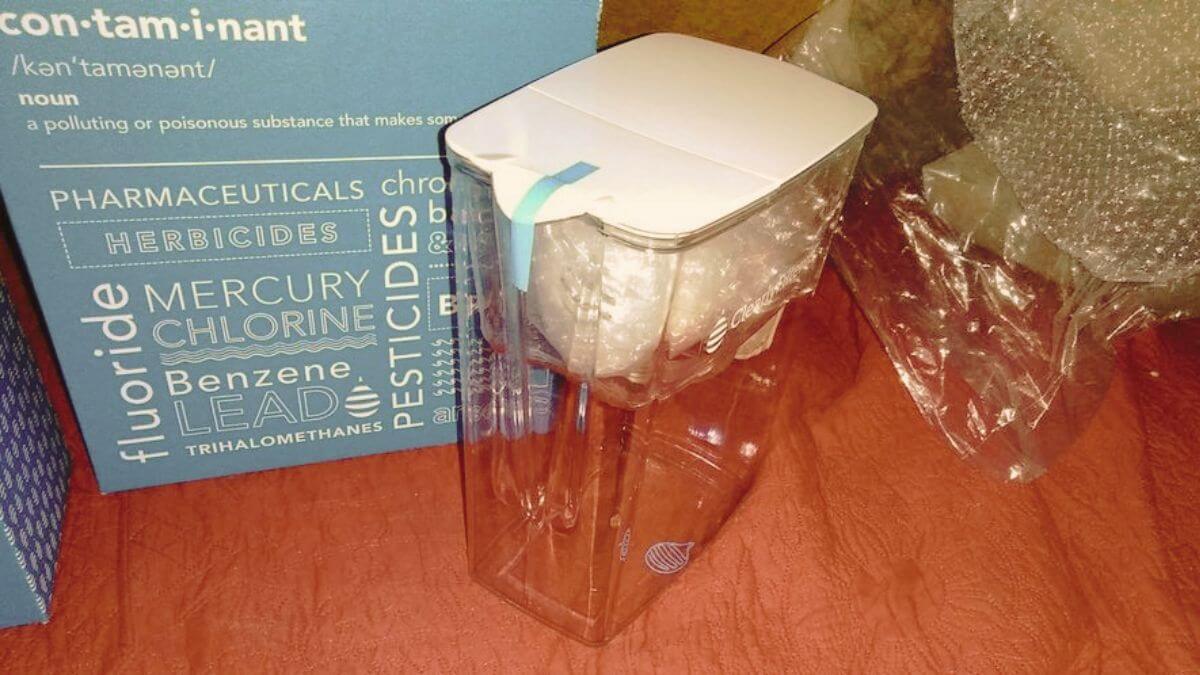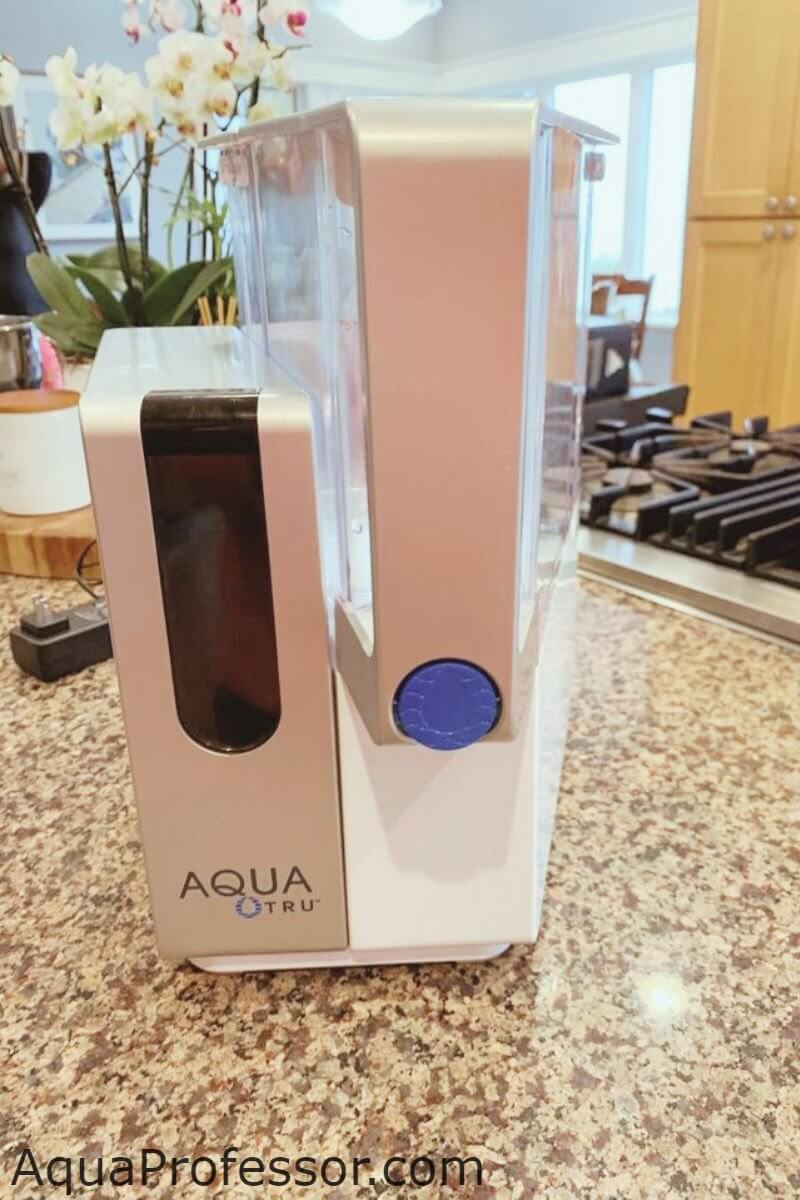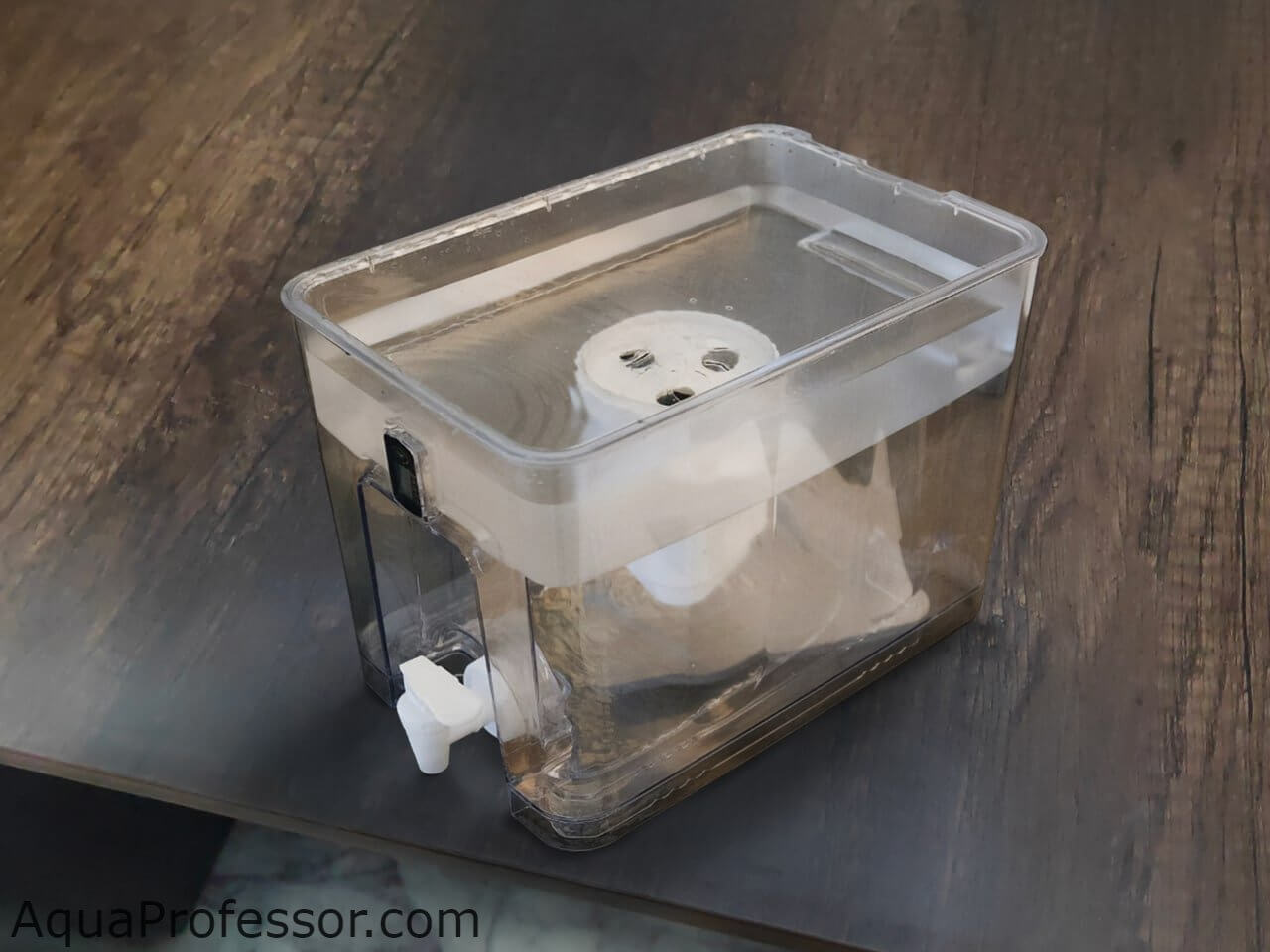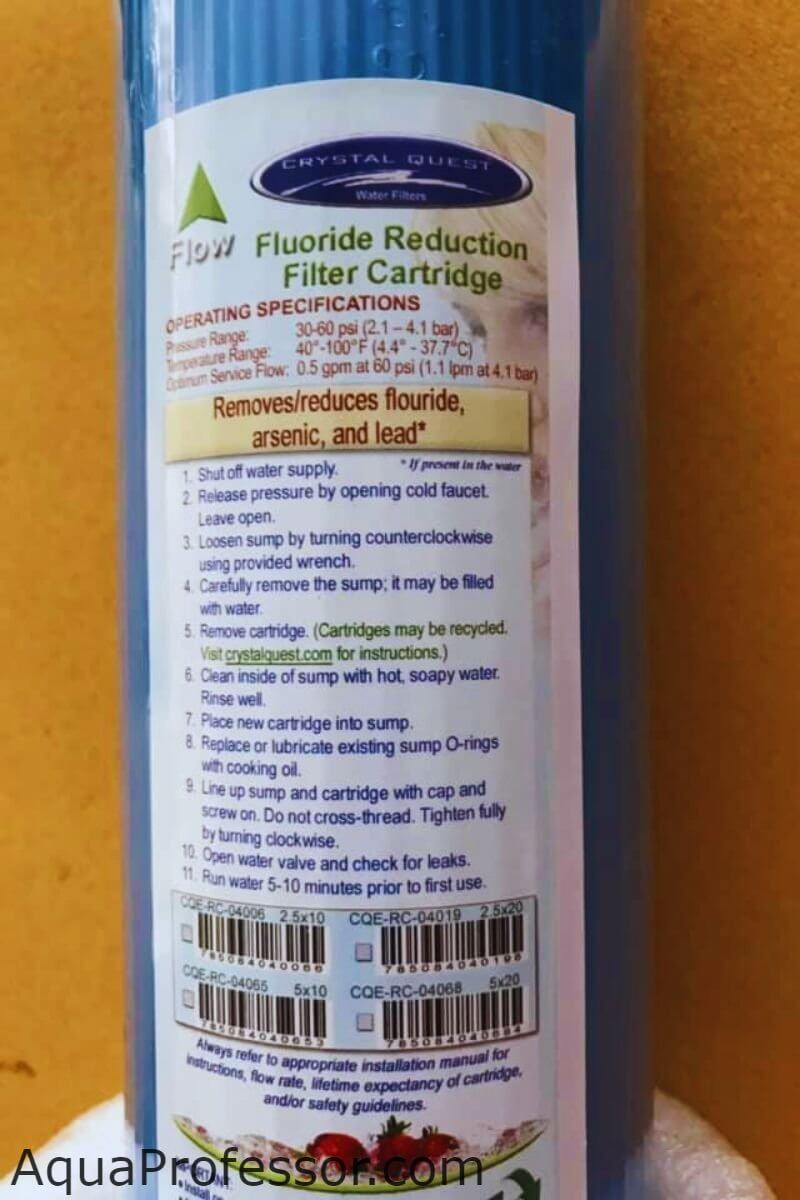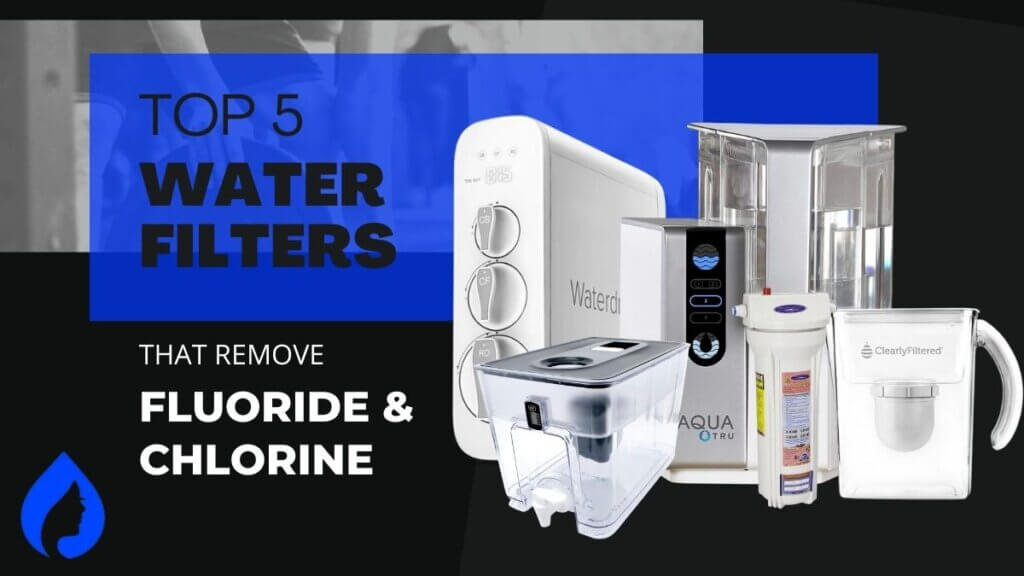
We spent more than 3 weeks researching 35+ fluorine and chlorine filters to come out with this list of top 5 water filters that remove fluoride and chlorine in 2024.
Continue reading for in-depth reviews, an expert buying guide, and useful information about the presence and effects of fluoride and chlorine in drinking water.
5 Best Fluoride and Chlorine Water Filters: Cheatsheet
Best Water Filter Pitcher: Clearly Filtered
- Reduces contaminant levels upto 99.9% for chlorine and 99.5% for fluoride
- Can purify nearly 100 gallons of water or last up to 4 months in total.
- Has certifications for NSF standards 42, 53, 244, 401, and 473.
- Has an unlimited warranty for any defects or malfunctions in the product.
Best Countertop RO: AquaTru
- Nearly 83 contaminants get eliminated, and the removal rate is 99% for chlorine and 93.5% for fluoride.
- Lasts upto 600–1200 gallons of water or 6–24 months, depending on your water usage
- Has certifications for NSF standards 42, 53, and 58.
- Has a one-year warranty to cover defects and damage.
Best Water Filter Dispenser: Epic Pure Dispenser
- Removes upto 98.45% chlorine and 97.8% fluoride.
- Can purify 150 gallons of water per day and last 4 months before it needs replacement.
- Complies with the NSF standards 42, 53, 401 & P4732.
- Has a lifetime warranty for any defect in the product
Best Under-Sink RO: Waterdrop G3
- Removes over 1000 contaminants from the water, which includes fluoride and chlorine.
- Can filter up to 550-2200 gallons of water and needs to get changed between 6-24 months, depending on the usage.
- Meets the NSF standards 58 and 372.
- Has a one-year warranty to cover all defects or problems in the product.
Best Whole House RO: Crystal Quest Fluoride Filter
- Filters out nearly 90-95% of fluoride from the incoming water.
- Can process 750,000-1,000,000 gallons of water or last 7-10 years.
- Meets the ANSI 61 standards to remove fluoride and chlorine
- Has a one-year warranty for the filter and a ten-year free-maintenance policy.
Here's How We Test Products At Aquaprofessor
- 5 Best Fluoride and Chlorine Water Filters: Cheatsheet
- Detailed Analysis Of 5 Best Fluoride and Chlorine Water Filters [Cheat-Sheet]
- Clearly Filtered Water Filter Pitcher
- Aquatru Countertop Water Purification System
- Epic Pure Countertop Water Filter Dispenser
- Waterdrop G3 Tankless RO System
- Crystal Quest Whole House Water Filter
- ⚠️Fluoride & Chlorine Levels In Drinking Water: All You Need to Know
- ✅How Can You Check Chlorine & Fluoride Levels In Water?
- Which Water Filter Removes Chlorine & Fluoride? [5 Types]
- The Expert Buying Guide for Fluoride & Chlorine Water Filters
- What Are The Water Filters That Remove Fluoride And Chlorine: FAQs
Detailed Analysis Of 5 Best Fluoride and Chlorine Water Filters [Cheat-Sheet]
Did you know that around 73% of the USA population receives a fluoridated water supply?
Chlorine is also a frequently occurring substance in water that many people fail to notice. Now, a healthy amount of these compounds isn’t necessarily harmful. But beyond 4 mg/L, fluoride and chlorine could pose health risks like cognitive damage, cancer, and heart and bone issues.
That’s why we researched for days to make this list of best water filters for fluoride+chlorine removal:
| Product | Type | Fluoride + Chlorine Removal | Filteration Capacity and Lifespan | Certifications |
| Clearly Filtered | Pitcher | 99.9% for chlorine and 99.5% for fluoride | 100 gallons or4 months | NSF standards 42, 53, 244, 401 and 473 |
| Epic Pure Dispenser | Dispenser | 98.45% for chlorine and 97.8% for fluoride | 150 gallons or4 months | NSF standards 42, 53, 401 & P4732 |
| Waterdrop G3 | Under-Sink | 98% for fluoride | 550- 2200 gallons or6- 24 months, depending on the equipment to change | NSF standards 58 and 372 |
| Crystal Quest Fluoride Filter | Whole House | 90-95% for Fluoride | 750,000-1,000,000 gallons or7-10 years | ANSI standards 61 |
| AquaTru | Countertop | 99% for chlorine and 93.5% for fluoride | 600-1,200 gallons or 6-24 months, depending on the equipment needed to change | NSF standards 42, 53 and 58 |
Clearly Filtered Water Filter Pitcher
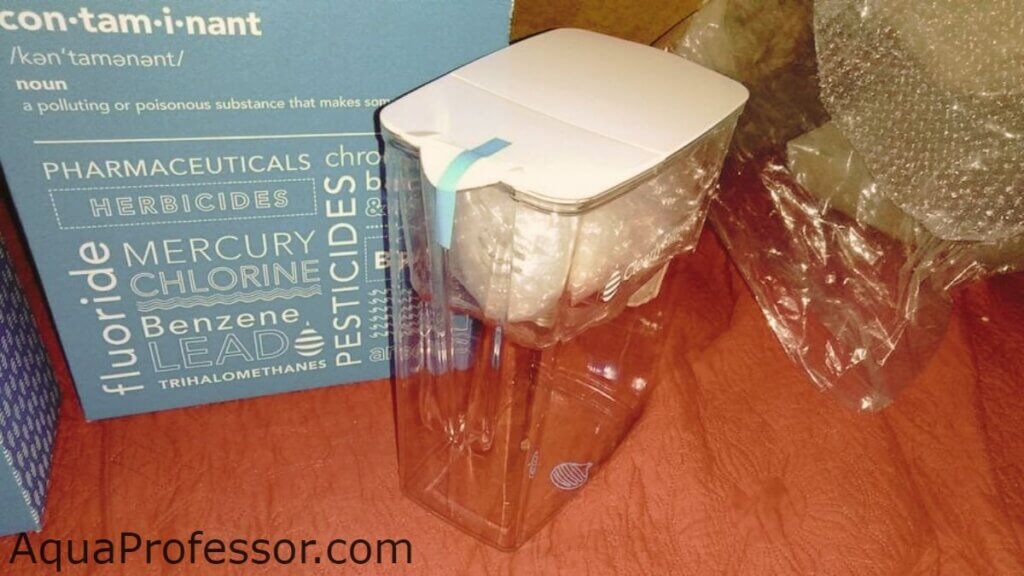
Small but powerful filter with the best filtration rates and comes at an affordable price range.
Type
Clearly Filtered is a pitcher-style purification device that purifies your water efficiently. Rather than being a bulky machine, it takes up much less counter space and is budget-friendly too.
In addition, it can hold up to 80 ounces of water at a time, which is expected in pitcher-style filters.
⚖️Fluoride And Chlorine Removal Levels
It can reduce Chlorine levels by 99.9% and Fluoride levels by 99.5%, which is considerably high considering the low price of this product. Overall, you can eliminate over 365 water contaminants through this filter.
Filtering Capacity and Overall Lifespan
The pitcher models usually have a main body with an attached filter that you must change every 4 months, depending on the amount of water you process.
Certifications & Warranty
Clearly Filtered water filter matches the NSF standards 42, 53, 244, 401, and 473. Perhaps the best part about this product is its lifetime warranty. So, if there are defects in the product at any point of time, you can receive instant support.
What Customers Say:
Clearly Filtered: Pros and Cons
Pros
- Quick setup and usage
- High-efficiency filtration
- Affordable even in the long-run
Cons
- Very small capacity and size
- Suitable for one or a few people only
Also Read: Top 3 Whole House RO
Aquatru Countertop Water Purification System
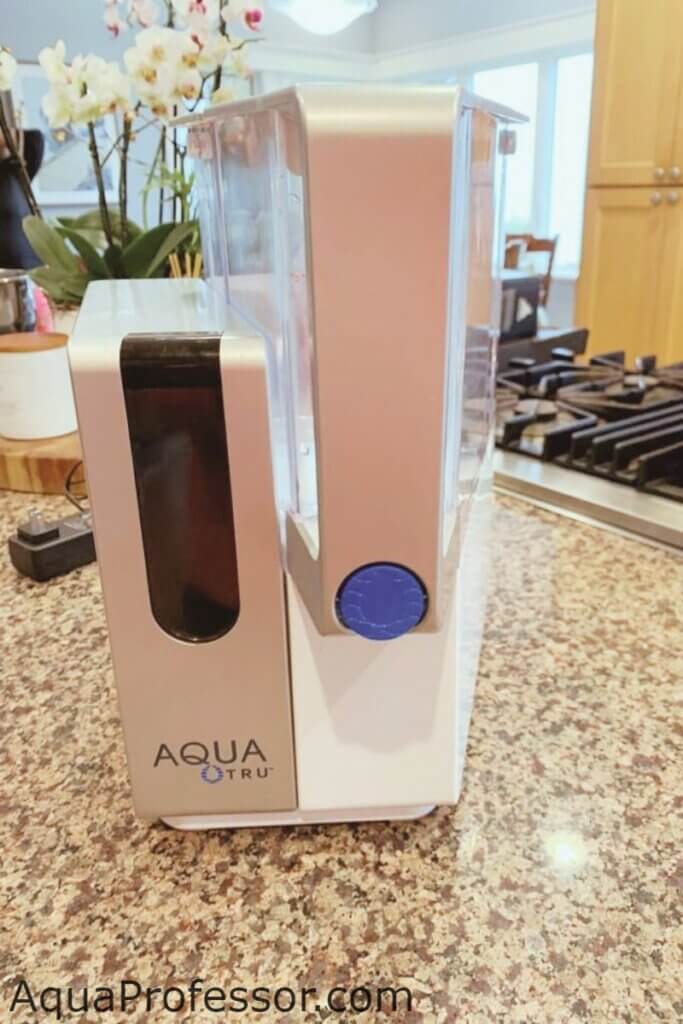
A budget-friendly, moderately sized filtration option with easy installation and maintenance.
Type
The AquaTru is a countertop type water filter. As its name suggests, it can sit on your countertop space like a dispenser and slowly purify the water. It utilizes an Ultra Reverse Osmosis system which purifies water in 4 steps.
⚖️Fluoride And Chlorine Removal Levels
It can remove 99% Chlorine and about 93.5% fluoride from your water. Overall, the device can remove 83 contaminants from your water supply. It can hold up to one gallon of water at once and refills efficiently in 10 minutes.
Filtering Capacity and Overall Lifespan
Since it has many filtration stages, it is designated equipment. Hence, your Pre-filter for the RO would last 6 months, your VOC filter for a year, and your RO membrane for 2 years. Of course, the number could vary depending on your water usage.
Certifications & Warranty
AquaTru has been IAPMO certified for NSF standards 42, 53, and 58. It also comes with a one-year warranty for any damaged or defective parts.
What Customers Say:
Aquatru Countertop RO: Pros and Cons
Pros
- Easy to install and use
- Delicious and clean water
- Quiet and self-sufficient in filtration
Cons
- Small capacity compared to others
- Not highly efficient for fluoride filtration
Also Read: What Happens to the Chlorine in a Water Softener?
Epic Pure Countertop Water Filter Dispenser
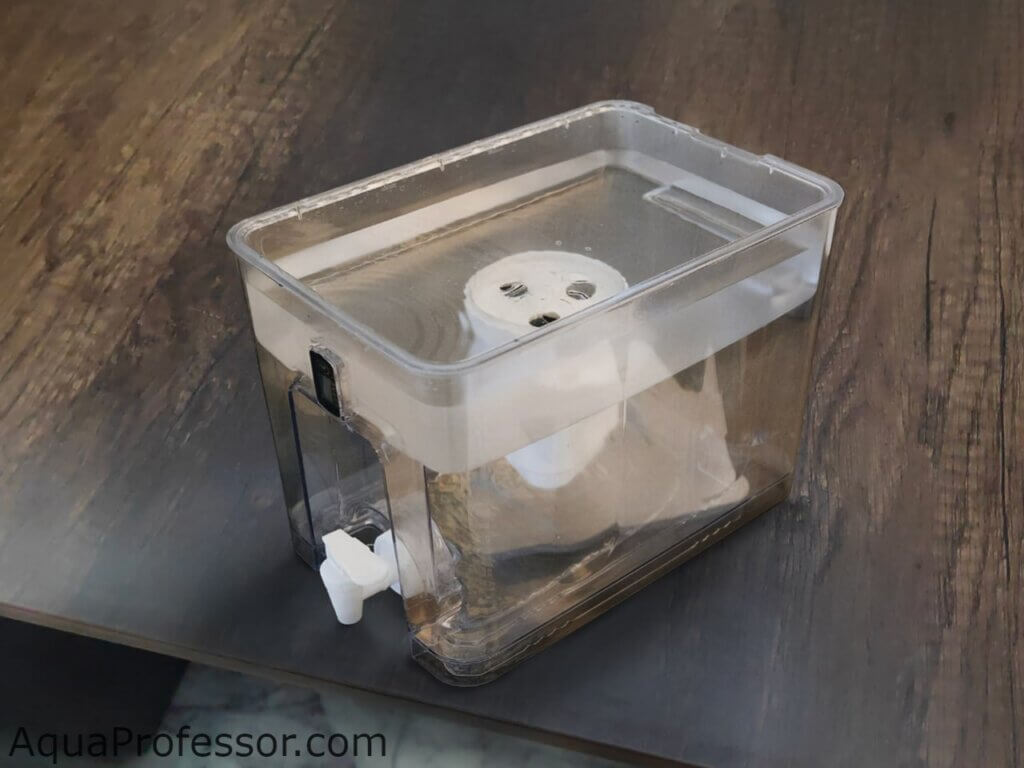
Ideal-sized dispenser with easy assembly, ample water storage, and filtration in 10 minutes.
Type
A dispenser-type water filter – the Epic Pure can sit on your counter or in other areas. It can carry up to 8.5 liters of water, 2 liters in the top reservoir, and 6.5 liters in the bottom of the water dispenser.
⚖️Fluoride And Chlorine Removal Levels
Epic Pure can remove nearly 200 contaminants, including Chlorine and Fluoride. It can cut the Chlorine levels by about 98.45% and Fluoride levels by 97.8%.
Filtering Capacity and Overall Lifespan
Thankfully, it utilizes a single filter, which is the only piece of equipment you must replace 3-4 times a year. An average filter lasts nearly 4 months, though the number may vary with your daily water consumption.
Certifications & Warranty
This product also meets the NSF/ANSI standards 42, 53, 401, and P473. Additionally, users can avail of the lifetime warranty on the product.
What Customers Say:
Epic Pure Dispenser: Pros and Cons
Pros
- Appropriate size for one or a few people
- Tasty water with low contaminant levels
- One of the most affordable options
Cons
- Too small for a family
- Inappropriate filter change indicators
Also Read: Hydroviv vs Epic Smart Shield
Waterdrop G3 Tankless RO System
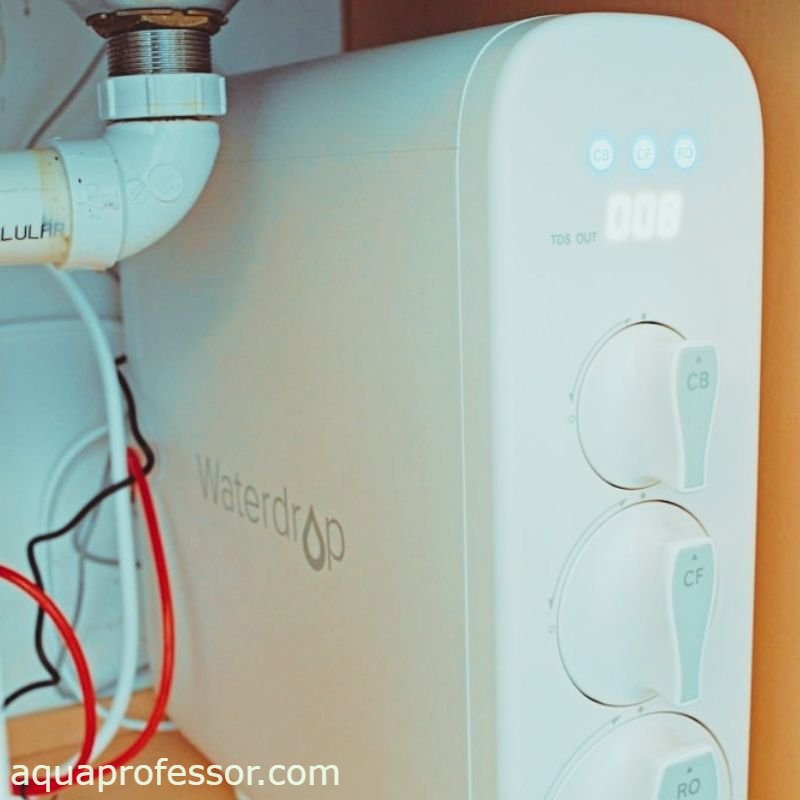
Bigger but better under-sink style filter with perfect flow and delicious water.
Type
Waterdrop G3 is an under-sink water filter, but unlike other filters on this list, you must get it installed under your sink along with its faucet. As a result, the installation process is slightly longer than other filters in this list.
⚖️Fluoride And Chlorine Removal Levels
It can reduce fluoride and chlorine levels by 98% along with 1000 other contaminants, which completely justifies its decent price tag.
Filtering Capacity and Overall Lifespan
It has three filters and equipment you must take care of for the smooth functioning of the RO. Its CF needs replacement every 6 months, CB every 12 months, and the RO system every 24 months.
Certifications & Warranty
The RO meets NSF standards 58 and 372. Moreover, it comes with a one-year warranty for any defects or damages.
What Customers Say:
Waterdrop G3: Pros and Cons
Pros
- Easy and quick filtration without waiting
- Relatively longer life of the equipment
- Not too space-consuming and well hidden
Cons
- Long and detailed installation
- Bigger investment
Also Read: SimPure Y7 Countertop Review
Crystal Quest Whole House Water Filter
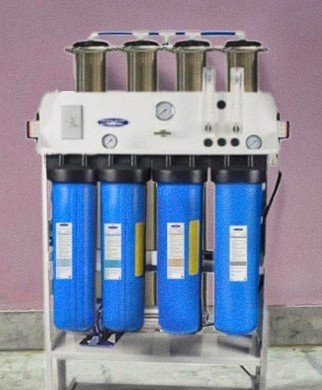
Expensive yet efficient water filtration, fit to meet a family’s water needs from drinking to bathing.
Type
Most of the above filters are to get filtered water for drinking, but what if you want your bathing water to be clean too? Here’s where the Crystal Quest filter comes in, as it’s perfect for houses with three or fewer bathrooms. It can filter up to 10 water gallons per day in a minute for a shower, making it ideal for use in the entire house.
⚖️Fluoride And Chlorine Removal Levels
It can curb 90-95% of fluoride from the water supply. It can also curb some other contaminants from the surface water, though the figure gets limited due to being a whole house water filter system.
Filtering Capacity and Overall Lifespan
When in use, you must replace its carbon post filter every year, sediment pre-filter every two years, and Bone Char filter for nearly 7-10 years. But filter life may fluctuate again based on your water supply and usage.
Certifications & Warranty
Its NSF certifications are currently unavailable on its website, but it meets ANSI 61 standards thanks to its independent testing. For this filter, you can avail yourself of free maintenance from the company for ten years. It also has a one-year warranty for any defects or problems.
What Customers Say:
Crystal Quest: Pros and Cons
Pros
- The best flow of water
- Perfect for consumption and other activities
- Ideal filtration and clean water
Cons
- High costs of product and installation
- Heftier annual maintenance costs
Also Read: Hydroviv vs Clearly Filtered Under Sink
⚠️Fluoride & Chlorine Levels In Drinking Water: All You Need to Know
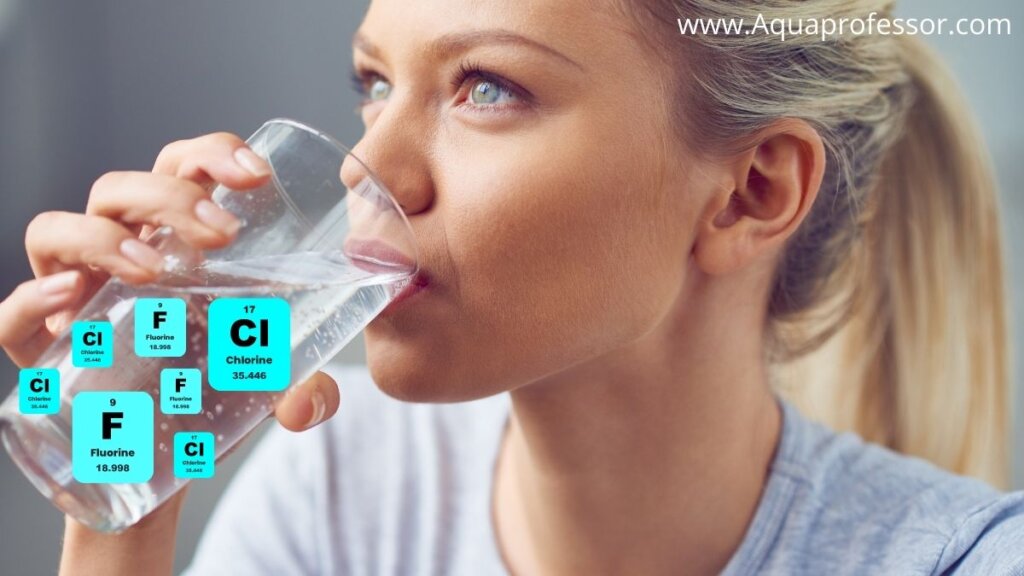
Chlorine is a common disinfectant used in government water treatment systems. It has bacteria-terminating properties, making it an essential part of water purification. Fluoride is a healthy mineral added to water by the government to improve the dental health of residents.
Reading this, you might think that fluoride and chlorine are two ordinary but essential minerals, but the truth is that beyond 4 mg/L, fluoride and chlorine can have serious health effects, which we will discuss in detail.
But first, let’s know the source of chlorine and fluoride in water.
How Do Chlorine and Fluoride Enter Your Water?
Let us begin with chlorine, as you may already know about its presence in the water. You may have heard about chlorine purification. You can add chlorine to remove contaminants and clean the pool if you own a pool.
Similar to this, the water supply systems use chlorine. Chlorine effectively kills microorganisms such as viruses, bacteria, and other harmful substances in the water. Hence, it gets frequently used by public and private water treatment plants. The government might add a regulated amount of chlorine to your water supply to avail of the benefits.
Next, we have fluoride in water. Fluoride is a mineral that helps counter tooth decay in humans. It is considered a healthy and beneficial mineral, which the government adds to your water supply. But, again, this amount is regulated heavily.
But fluoridated toothpaste and other fluoride-added substances combined with the water supply may increase the fluoride levels in your body to dangerous levels. Hence, people prefer fluoride from their teeth care supplies rather than from the water.
Also Read: Can RO Remove Lead?
Is Chlorine Bad for Your Health?

Chlorine is a common disinfectant used in various municipal water treatments to kill harmful bacteria. Overall, it is not that bad for your health in minute quantities. But if that amount changes, it would be a different scenario altogether.
Beyond 4 parts per million, chlorine can cause dryness, itching, and redness. It can also affect your hair texture and scalp health.
In worse cases of chlorine overload, you can get exposed to trihalomethanes. These substances may increase the risk of cancer in your body. They may also aid in miscarriages in pregnant women.
Additionally, they could give way to diseases like asthma and heart issues. However, a point to note here is that all these health effects are debatable. They need more research, but why consume that much chlorine anyway if it leads to health risks?
Is Fluoride Harmful to You?

Similar to chlorine, fluoride is not as toxic as other water contaminants. You may have noticed that your toothpaste often contains fluoride- it is ideal for your teeth. However, what level of fluoride in the water you consume determines its effects on your health.
Scientists have found the ideal level of fluoride we need and can bear, which is 4 mg/L. But crossing that threshold can turn this helpful substance into our enemy. A study on animals discovered how high fluoride levels directly affected the animals’ brain functions.
It suggests that excess fluoride may cause mental and developmental issues in children. It is also related to lower bone density and skeletal fluorosis upon excessive consumption. Its permanent damage to memory, cognition, and bones is concerning.
Fluoride is more notorious as there is more evidence backing these health effects. We don’t have all the iron-clad proof yet, but with some time, we may discover its long-term issues upon consumption.
Also Read: Does Costco Water Have Fluoride In It?
✅How Can You Check Chlorine & Fluoride Levels In Water?
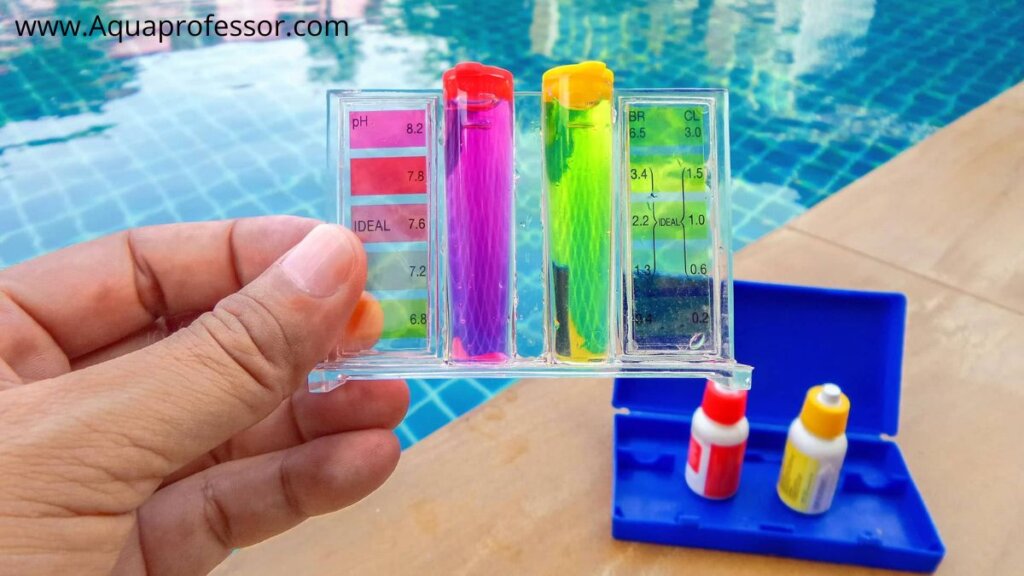
Before you look for the perfect filter, you must ensure that your water contains fluoride and chlorine. Both these organic compounds have some giveaways which make their presence apparent and are counted as essential minerals.
Sometimes you can use merely your sense of smell to detect a substance. On other occasions, you may need to consult a professional to test it through the formal procedure.
Let us look at 3 ways you can test your water for chlorine:
- Chlorine is a pungent-smelling substance resembling bleach. If you detect a strong and almost sourly intense odor in your water- it may be chlorine. You could do a formal test to ensure you’re right, but its smell is an initial indicator.
- You can buy an affordable pool test kit to see if your water is chlorinated or not. Pool test kits are more widely available and affordable than other tests, so they might be ideal.
- Finally, you could get a water test kit for chlorine to get highly accurate results. You may need to send a water sample and will receive all results online telling you about its presence and concentration.
Fluoride, unlike chlorine, is much harder to detect in water. You cannot stick to an odor test to confirm the presence of fluoride in water.
Lets us look at 4 ways you can test your water for fluoride:
- The first way would be to use test strips. You can buy fluoride testing strips online or in retail stores. They will give you a rough idea of its present levels.
- For better results, a photometer is a good option. A photometer detects the fluorine through the color transformation, though the results are much clearer. You can find one-time kits for the same in an online store.
- Another way is to use an Ion Selective Electrode with a meter. It utilizes its sensitivity towards fluoride ions to detect their presence. You can find this equipment in the market, though not easily. It might also be difficult to operate if you don’t have prior experience.
- A lab test will be the final and ideal way to detect excessive fluoride. Many companies offer multiple-step testing services for their customers. You must send them a sample of the water you need to get tested. Then, you wait a couple of days before the results arrive in your email. You can see both the substances’ levels on the test and decide accordingly.
Which Water Filter Removes Chlorine & Fluoride? [5 Types]
I have already shown you the various methods you could use to purify your water. But with so many methods, how can one choose the right one? Though all these methods work well, it is more a matter of personal preference.
So, you can look at some characteristics of the different filters and understand them. It will give you the insights to help you choose a filter accordingly. Here are five filtration methods and their effects on fluoride and chlorine:
Reverse Osmosis Filters
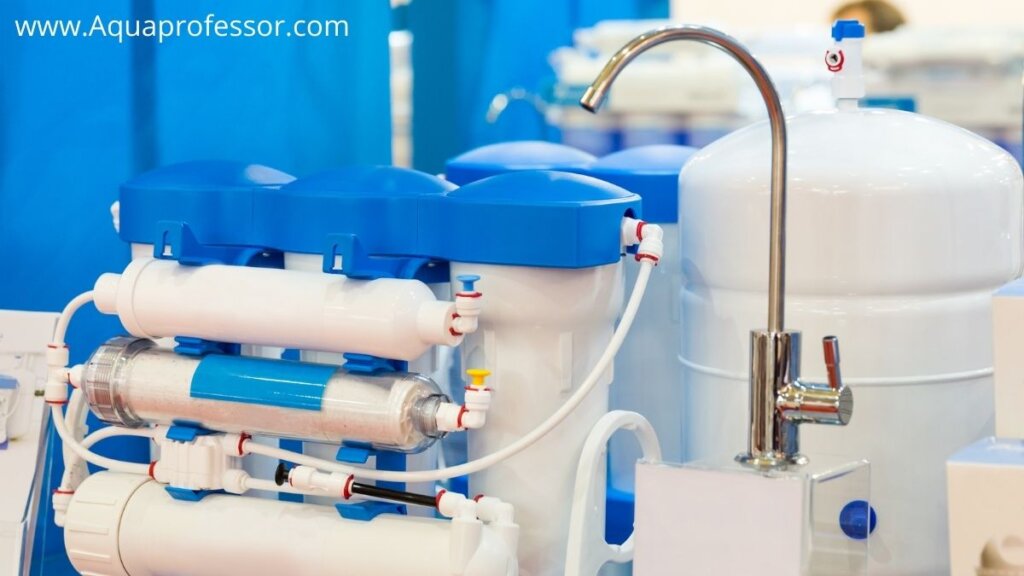
Reverse Osmosis system refers to a filter with a semipermeable reverse osmosis membrane that removes all unwanted material. It is certainly one of the most efficient systems out there; hence it is also popular.
This technique remains effective for chlorine and fluoride. It has many layers and stages which the water has to pass through. Between all these filters, all contaminants get trapped and thrown out with wastewater.
Ultimately, you are left with clean, fluoride-free, delicious water to consume. However, this process is slightly time-consuming- so you won’t have instant purification.
Water Filter Pitcher
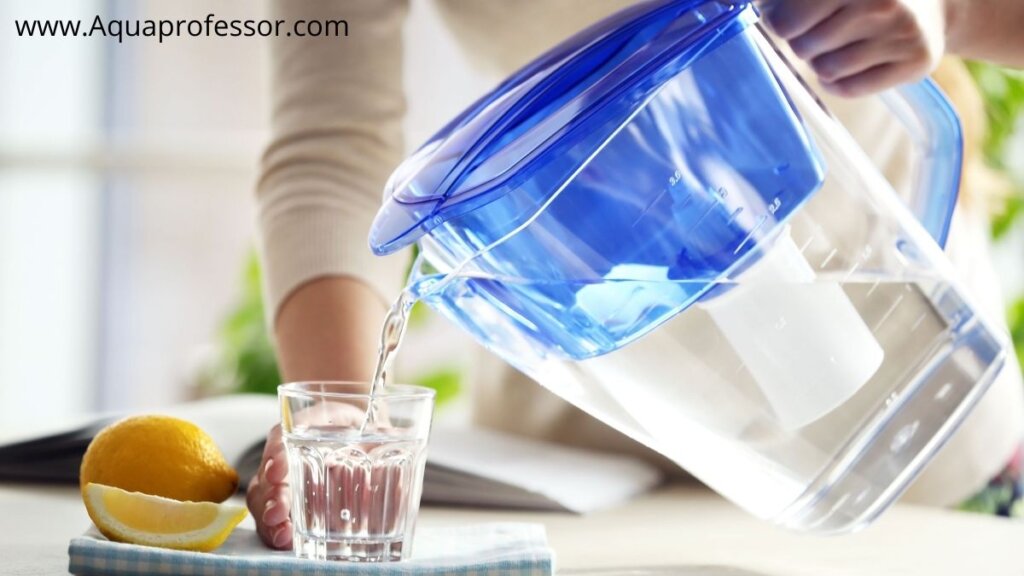
Pitchers are surprisingly the most intensely purifying methods out there. If you read the table above, you will see that the pitcher removes nearly all the excessive fluoride content from your water source. Pitchers commonly use the activated carbon filter or even an affinity filter.
Both these methods identify excessive fluoride and chlorine in the water and draw them out. The purified water then drops to the bottom of the pitcher, where you can use it. It is arguably the most popular method out there.
This equipment is so popular as it is efficient at what it does, more than others on the list at a fraction of a cost.
Countertop Water Filters
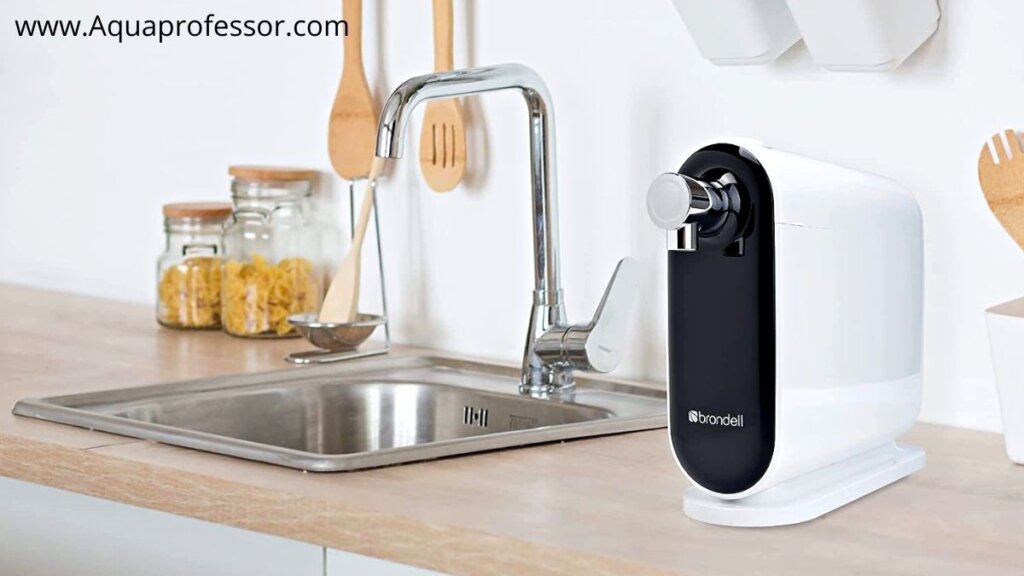
Countertop water filters are independent systems that can hang on top of your kitchen counter. They have a very similar mechanism to a pitcher or a filter bottle. They use activated carbon or other house water filtration systems to draw out impurities.
A significant difference between the two may lie in their sizes. Countertop water filters usually come in larger sizes and can filter and store more water at a time. However, these filters do not cleanse out fluoride content as thoroughly.
But this isn’t necessarily bad, as small amounts of fluoride content are helpful to your teeth. Sometimes these systems also accommodate an RO or other filtration stages to improve efficiency.
Under Sink Water Filter Systems
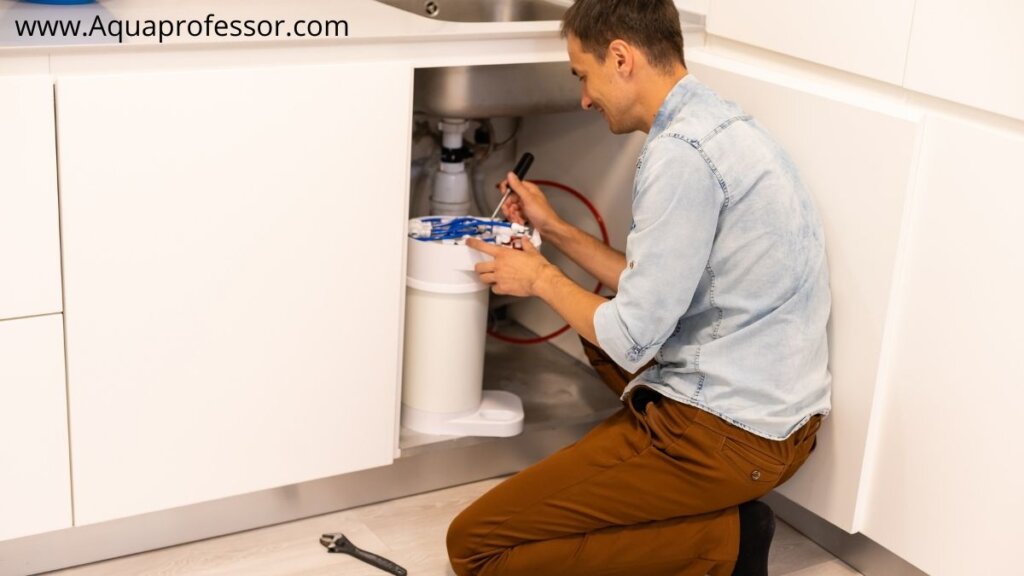
Under-the-sink filters are also among the popular choices for water filtration. Depending on the product, it uses multiple stages to filter the water. These stages ensure that no additional contaminants from supplied water remain in the clean water for consumption.
While it shares many features with the RO system, it is considerably faster in its purification process. It can produce filtered water within 10-20 seconds, while the other methods take more time. The type of water filter used in the mechanism reduces fluoride levels in the water.
They can convert the free chlorine to chloride if they have an activated carbon filter. Even with the carbon filter method, they are pretty efficient at what they do. However, they do need more time, effort, and monetary investment.
Water Distillers
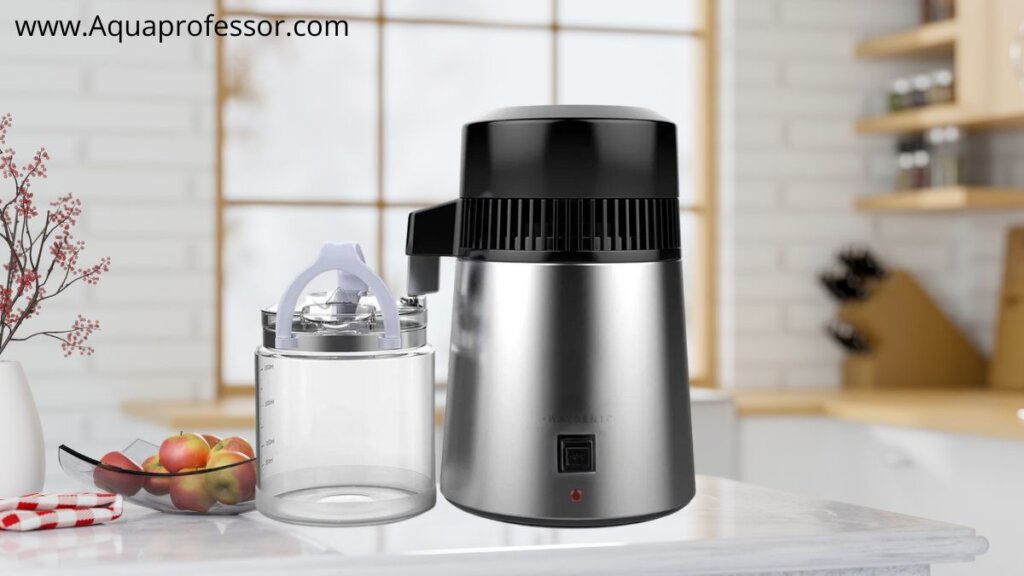
Water distillers are pretty old-school methods that utilize an essential process in removing contaminants: boiling.
You may ask- “Why can’t I just boil my water like I normally do?” Well, distillers do not boil your water and give you the boiled part. Instead, they divert the steam from the boiling water to another chamber and preserve it. So, boiled water contains the most harmful contaminants, while the steamed part is pure and clean water.
Due to the popularity of RO and other methods, distillers have lost their shine. But distillers are perfect for removing chlorine and fluoride efficiently from city water.
The Expert Buying Guide for Fluoride & Chlorine Water Filters
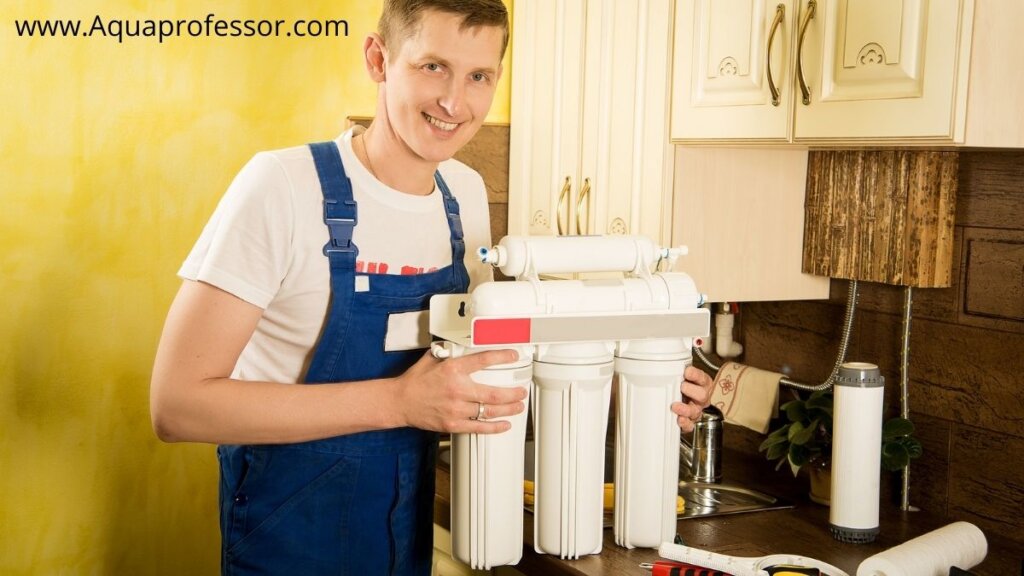
We have looked at all the facts and details about the house water filtration system. But does choosing still seem like a tough task? Don’t worry if you do not know where to start. Ask yourself-
“What do I need from my water filter?”
or
“Which aspects are more important to me than others?”
Following are some features you can weigh each filter by to find your right choice [we have followed them too while shortlisting our top 5 recommendations in this article]:
⏩Filtration Speed
The first aspect would be to look at how much time you can wait to get the filtered water. If you need your water immediately, an under-sink system will help you achieve your goal.
Conversely, if you don’t have a time crunch, you could always use a filtration pitcher instead. You should also note the pressure you want your water to have to see if you need a bigger filter or not.
Budget
Your budget matters the most in your journey to finding the right filter. Think about how much you can invest immediately and in the future towards your filter. Even a whole house water filter can be ideal if you don’t worry about spending big.
But, if you have a limited budget, opting for countertop water filter pitchers is better.
Installation Time

Get a pitcher if you want a filter immediately and don’t have much time to spare. You can install them in as little as two minutes. Plus, you can assemble them without an expert.
The whole house water filter system and under kitchen sink filters need a professional installation. They also take plenty of time to come together, so only opt for this option if you have time to spare.
⚖️Filtration Intensity
If you want to eliminate close to 100% of fluoride ions in your water, the pitcher filter or activated carbon filter methods work best. They filter out almost all harmful substances.
But if you want to maintain a healthy level of fluoride in your tap water, you can opt for an RO. It removes as many fluoride ions in your water to make it safe for use.
Size
If you have more than 5 people in your family or have sizeable water consumption and usage in a day, you might want to get an under-sink or a whole house water filter to meet your needs.
But if it is a few people or only you, a pitcher filter or countertop filter would work just fine. It would be able to purify enough water to match your daily consumption.
What Are The Water Filters That Remove Fluoride And Chlorine: FAQs

Does Brita filter out chlorine and fluoride?
While Brita filters can effectively remove chlorine from water along with its weird odor, the same is not true for fluoride. The Brita filters cannot efficiently remove fluoride levels from public water supplies. They haven’t claimed their fluoride-removal capacity on their official page, nor has it been proven in any independent testing.
How does a water filter remove fluoride?
Filters utilize Reverse Osmosis Systems to eliminate fluoride from water. Using a filter and an activated charcoal formula, you can source the fluoride and remove other harmful contaminants. Then, the tap water from the other side is contaminant-free and much safer to drink.
Does bottled water have fluoride in it?
Some bottled water brands add small levels of fluoride to drinking water. It is a frequently present organic compound in all kinds of water; hence it isn’t surprising. But these levels are regulated by strict FDA standards. So if you buy a bottle, you can check the product information to see if it does contain fluoride.
Do chlorine and fluoride evaporate from water?
Technically, chlorine may evaporate from the tap water if left uncovered for 20-30 hours. However, it is an unnecessarily long process. Some people boil it, but it may not remove all the chlorine.
As for fluoride, it does not evaporate from the water. Therefore, no matter how long you let it stand, you won’t see a considerable difference in its levels. Instead, if you boil the water, the concentration may even increase due to decreased water volume.
Are there natural methods to remove fluoride and chlorine in the water?
No, there aren’t natural methods that can completely free your city water of chlorine and fluoride. Techniques like leaving the water to sit for some time may evaporate chlorine, but not all of it.
On the other hand, you cannot remove fluoride intake without a filter at home whatsoever. Hence, you must install a proper fluoride and chlorine filter to get pure water.
Otherwise, you risk yourself fluoride and chlorine contamination which can have adverse health effects, as discussed in this article above.
Adarsh is a Health & Nutrition Sciences graduate with expertise in environmental health. He is associated with ventures like Glacier Fresh Filter and Simpure Filter Systems. Through Aqua Professor, he intends to provide helpful information to every home to help them make smarter decisions.

